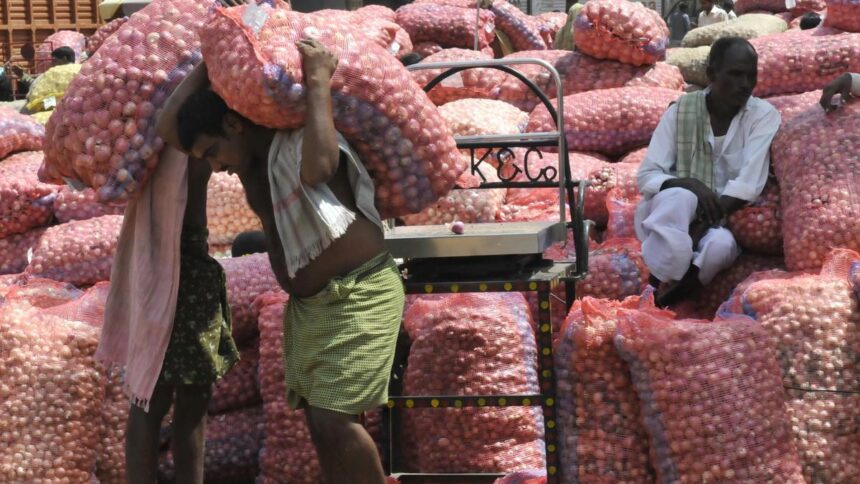Mandi prices of kharif crops across key producing States display significant disparities when compared to all-India average rates, attributed to local factors and inefficient data collection, experts say. Without necessary market reforms and close observations of farm-gate prices, farmers are unlikely to benefit.
For instance, the all-India average price of moong (green gram) in October was ₹6,617 per quintal. In Uttar Pradesh, farmers received ₹8,704 per quintal, whereas in Haryana, the selling price was ₹4,973 per quintal. In Rajasthan, the price stood at ₹6,470 per quintal, while in Punjab, it was ₹5,492 per quintal.
Despite government claims of ensuring maize procurement at the minimum support price (MSP) by linking it with ethanol-producing distilleries, the all-India average rate in October was only ₹1,821 per quintal. In Madhya Pradesh, it dipped to ₹1,580 per quintal; in Rajasthan, it was ₹1,724 per quintal; and in Karnataka, the price reached ₹1,931 per quintal. Conversely, Uttar Pradesh reported the highest rate at ₹2,284 per quintal, while Haryana followed closely at ₹2,378 per quintal, nearing the maize MSP of ₹2,400 according to data from the Agmarknet portal.
“There are true variations in prices between States, primarily due to the historical gap between consuming and producing States. However, in recent years, the price differences have widened even within major producing States, warranting further investigation. Quality and errors in data compilation may be contributing factors,” remarked a former Union agriculture secretary.
Recent reports indicate that mandi rates in Uttar Pradesh are rising, potentially due to reporting anomalies under the State government’s jurisdiction. A former senior Uttar Pradesh official noted that after the State government enabled traders and companies to buy directly from farmers under a licensing system, mandi rates improved as farmers are starting to receive prices higher than traditional mandi rates.
“The situation calls for monitoring the prices farmers receive in mandis, as prices may be artificially depressed due to collusion between traders and officials. Any instances where prices fall below a certain threshold should be thoroughly investigated to verify the commodity’s quality,” stated Kedar Sirohi, a farmer leader from Madhya Pradesh.
He advocated for the enforcement of MSP at fair, average quality (FAQ) standards to ensure farmers in leading producing states receive comparable rates. Additionally, he suggested establishing grading and drying facilities in every mandi. Instead of reducing rates based on claims of high moisture content, crops should be dried first.
Despite the withdrawal of the three farm laws, market reforms have seen no progression at the Centre level. An expert added that the last effort for a uniform market structure, embodied in the National Policy Framework on Agricultural Marketing, was effectively halted following objections from Punjab.
Published on November 10, 2025.










